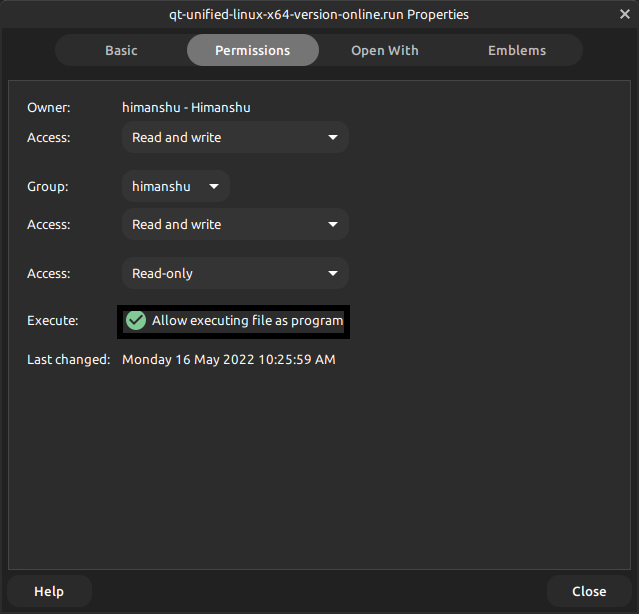How To Install Qt Creator On Linux?
Last Updated :
22 May, 2024
Qt Creator is a cross-platform C++, JavaScript, and QML integrated environment that simplifies GUI application development. It is currently available for Windows, macOS, and Linux. It is part of the SDK for the Qt GUI application development framework and uses the Qt API, which encapsulates host OS GUI function calls. It includes a visual debugger and an integrated WYSIWYG GUI layout and forms designer. The editor has features such as syntax highlighting and autocompletion. Below are the steps to install Qt Creator in a Linux distribution.
Install Prerequisites
The Qt installers for Linux assume that a C++ compiler, debugger, make, and other development tools are provided by the host operating system. If the tools are not present in your distribution, run the following commands in your terminal based on your distro.
Debian/Ubuntu/Linux Mint
sudo apt-get install build-essential libgl1-mesa-dev
Fedora/RHEL/CentOS
sudo yum groupinstall “C Development Tools and Libraries”
sudo yum install mesa-libGL-devel
openSUSE
sudo zypper install -t pattern devel_basis
Download the Qt installer
You can download the Qt installer for Linux from its official site which will automatically detect your operating system and will recommend the correct version for your system based on the architecture of the computer.
Run the Qt installer
The downloaded file will be named something like qt-unified-Linux-x64-version-online.run. This file would not run directly in the Linux distribution, so the user must turn it into an executable file by changing its permissions. The permissions can be changed through the terminal or by using the file manager.
Using Terminal (all distributions), Locate the file in your system and change the directory accordingly in the terminal using the cd command.
chmod +x qt*.run
This will change the turn the file into an executable. One can also give the full name of the file in place of qt*.run. Run the file with the following command
/qt*.run
Using file manager (Debian-based distributions)
- Locate the file in the system and right-click on it
- Go to Properties.
- Under the Permissions tab, enable Allow executing file as a program.
- Run the file by right-clicking on it.

The installer window will show up. Install the application based on your preferences. Make sure any file starting with the same initials as the Qt installer does not exist in the same directory.
Please Login to comment...